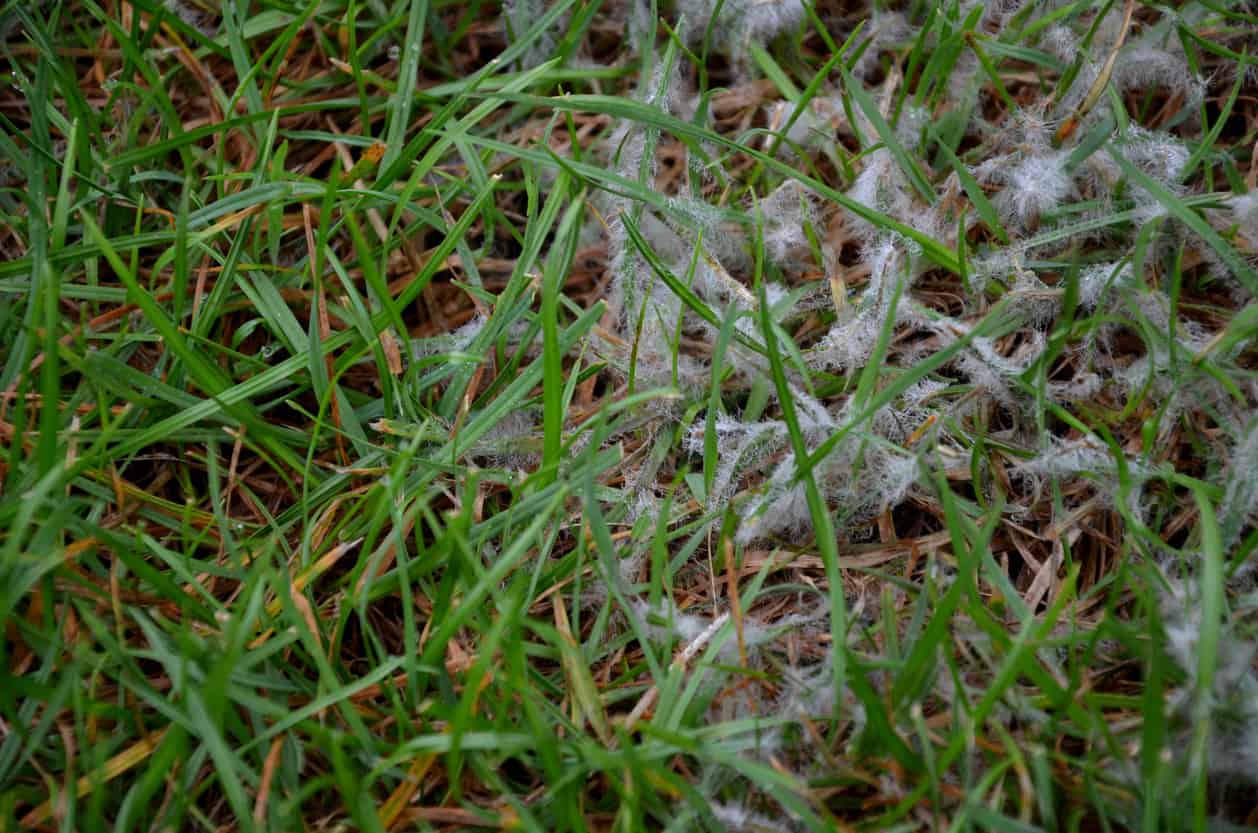
Creating a Poolside Paradise: Must-Have Features for Your Pool Landscape


By Ed Ball | Published on March 29, 2024 | 4 min read

One of the biggest mysteries in spring landscaping is those unnatural brown spots on the lawn when the rest of your grass is springing to a bright green vibrance. Ideally, your grass hibernates the first layer of frost and springs back to live in the spring. However, you may have noticed that your beautiful green carpet of spring grass is marred by patches of dead brown grass. This can be a real challenge, no matter what your reason for wanting a deep pile of soft summer grass. Whether your neighborhood is about appearances, you want a safe soft yard for children at play, or you just like to keep a flawlessly green garden. Despite your best efforts, the same patches of grass die with every snow melt. What you might not realize is that the culprit could be snow mold.
Snow mold is a fungus in the mold category that feeds off grass and very wet soil. The snow mold spores lie dormant in your soil all year waiting for the perfect conditions when the snow starts to melt and the ground becomes very wet. The moisture then nourishes the mold which quickly forms colonies. Those colonies then form a fuzzy film over the grass in your lawn, causing it to die in circles.
Snow mold can make a lawn or grounds an unpleasant place to explore. Soon a crispy stretch of brown patches instead of soft grass. In areas where snow mold occurs, it is likely to be seen again. You can recover your lawn every year and still see those brown patches in the spring because of how the mold lurks below the ground and keeps coming back.

Snow mold makes your new spring lawn look like crop circles. You will see spreading brown thatchy areas often with a smattering of green in the center. This will spread in multiple splotches across the yard as the snow mold colony grows. Those who are familiar with the oddly circular way that mold tends to spread will recognize the pattern as it appears on their lawn.
Interestingly, snow mold rarely appears when there is visible snow. It appears right after all the snow melts into the soil, making it wet and perfect for mold.
If you look very closely, you can see a moldy fuzz in the thatch where the grass has been killed. If the fuzz is gray, then your grass might come back. Only the blades are damaged. If the fuzz is pink, then your grass is dead at the root. You’ll need to reseed after killing the mold.

Once you have the mold and crop circles, it’s too late for fungicide. The snow mold will likely also come back next year because the spores are in the soil. But you can save these parts of your lawn. Snow mold will go away once the soil is no longer so moist, but that can take weeks and sometimes months.
To clean up and fix snow mold patches in your lawn, start with the metal rake. Break up the thatch and turn the soil underneath to expose more soil to air. This will help dry out the layers of soil underneath so that the snow mold has nothing to feed on.
Clear the thatch down do the soil and reseed the bare patches of lawn or place new circles of sod for best results.

The good news is that if you know there is snow mold lurking in your soil, you can prevent it from blooming in the early spring. By taking steps in late autumn before the first snow, you can prepare your lawn to resist snow mold and return to proper vibrancy in future springs.
Mow your grass short before the first snow. Shorter grass is less likely to trap moisture in the soil, which can reduce the chances that snow mold spores detect perfect conditions.
Right after you mow in the autumn is when to lay your fungicide. This mixture is designed to make the stalks of your grass less appealing and perhaps mildly toxic to the eager spores so they have nowhere to go.
Piles of leaves can also trap moisture, especially if leaves get trapped under the snow in a big pile on your lawn. Even two or three inches of leaves can create a soggy mess that creates the perfect condition for mold both from the snow and otherwise when the spring thaw occurs.
So clear out your leaf piles and make sure they are fully off your grass before being snowed out.
Make sure your yard is not holding more water than it needs to. Check your drainage plan and pattern. The clever installation of a French drain or re-grading your yard to drain more effectively can make a big difference.
Lastly, avoid accidentally fertilizing the snow mold. Lay your fertilizer in warm months, after the mold season has passed, and not in the autumn.
Lastly, the thatch layer of your lawn assists in holding moisture. By regularly breaking up the solid protective layer over the soil formed by the thatch, you can help the soil dry faster all year long.
The best thing you can do to stop the return of snow mold each spring is to rebuild the space. Remove all the grass and the top layer of soil. Then either replace it with new sod squares or you can even redefine this space into a flower garden, a seating area, or a decorative island with the help of Ed Ball Landscape Architecture.